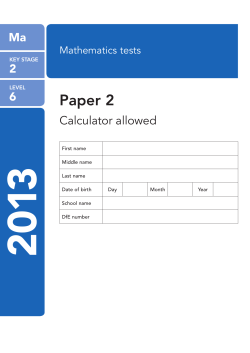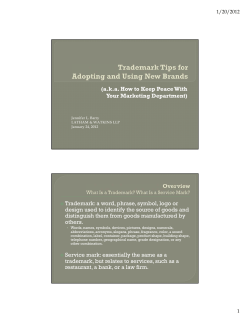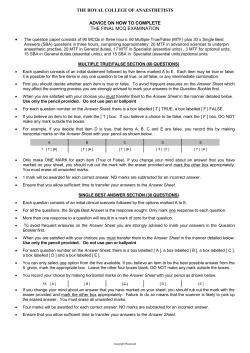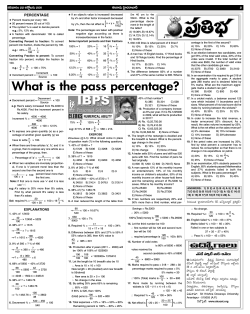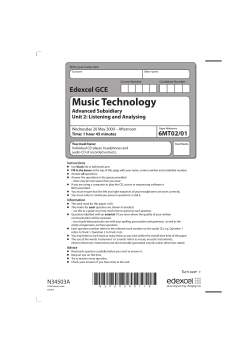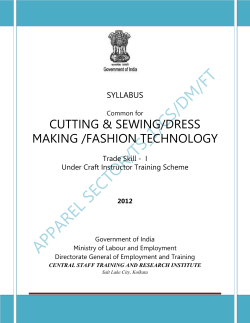
How to tackle exams: a marker’s perspective
RELEVANT TO ACCA QUALIFICATION PAPERS P1, P3, P4, P5, P6 AND P7 How to tackle exams: a marker’s perspective I have been lecturing students for more than 15 years (usually over 400 at every sitting) preparing them for their final level strategic management paper, and my advice echoes many of the points made in the examiner’s recent video presentation. I decided to become a marker to help me understand why apparently well-prepared students performed badly in the actual exam. I wanted some insight because, whenever a student marginally failed, they would insist that they did not understand why. This article will hopefully show how the good advice given by your tutor and the examiner often falls on deaf ears. In my marking experience I have seen how students who marginally fail do so not as a result of lack of knowledge, but because of very basic mistakes in technique – many of which are mentioned in the examiner’s presentation. The points considered in this the article are highlighted in bold and address some of these basic mistakes. Where appropriate, I have tried to back up these points from my experience as a Paper P3 marker. The examiner identified the following key points: • • • • • However you study, ensure that you cover the complete syllabus Undertake practice scenario questions under realistic time constraints Practice your handwriting in three-hour sessions Read widely, keep up to date, be aware of global trends and issues Revise properly and comprehensively. Don’t question spot I plan to use these points as a structure for the article showing how students lose valuable marks by ignoring them. Practise your handwriting, in three-hour sessions I would stress that it is very difficult to perform well in the exam if you have not been through the experience of writing for three hours on a number of occasions before the big day. After all, would you take your driving test without having practised a few times before the actual test? It would be crazy not to, yet there are many students who do a three-hour exam for the first time in the actual real exam. If you cannot get this experience through an organised course, then why not hook up with a study buddy and mark each other’s scripts? Your study buddy should also be able to provide you with feedback on the clarity of your handwriting and effectiveness of your presentation. Read widely, keep up to date, be aware of global trends and issues Not only does reading widely help improve your awareness of business trends but it is also of immense benefit to your business English. The exam consists of many pages of business scenarios that have to be read and digested fairly quickly, and someone who is used to reading business English regularly – as © 2011 ACCA 2 HOW TO TACKLE EXAMS: A MARKER’S PERSPECTIVE MAY 2011 presented in business journals and newspapers – is much more capable of quickly digesting this examination scenario information. Consider the Financial Times and The Economist, both of which have good value subscription rates for students. Read questions before the scenario Adopting such an approach will ensure that you read with purpose with a clear agenda as opposed to just reading through without any clear direction. Allocate your time properly The exam is as much a project management exercise as a test of knowledge. The main area where students get themselves into a muddle with Paper P3 is on Question 1, based round a 50-mark case scenario. In many of the scripts I marked it was obvious that a disproportionate amount of time had been spent on this question. This resulted in candidates doing reasonably well and maybe scoring 30 out of a possible 50 marks, but probably taking approximately two hours to achieve this. They should have spent no more than 90 minutes on this question. Candidates then chose a Section B question and passed again, scoring perhaps 13 out of 25 and probably taking roughly the appropriate time (ie 45 minutes) to answer the question. However, because they had overrun with Question 1, they now had only minutes to deal with the second Section B question and, consequently, scored only two or three marks. Their total score was therefore 30 + 13 + 3 = 46 – leading to a fail. ACCA has invested considerable effort in assessing students’ performance in examinations and it has shown that the marks scored per minute on a question falls over time as you write the answer. For example, when starting a question, a student might score 0.8 marks per minute, but 20 minutes in to the answer the score rate will have fallen to as low as 0.1 marks per minute. Therefore, a student who believes they should spend an extra five minutes getting a couple more marks will actually score, on average, fewer marks than a student who had left the question at the end of the allocated time and went on to start the next one. This is not my opinion, but a fact that has been proven by ACCA. I would recommend that you allow 15 to 20 minutes reading and planning your answer to the Section A case study question, and a further 10 to 15 minutes reading and planning Section B questions. This adds up to approximately 30 minutes more than the allocated reading time. You therefore have 150 minutes left to gain 100 marks, which equates to 1.5 minutes per mark. Can I insist that you treat the time in the exam like you treat your resources in your workplace? Create a strict budget and stick to it. I would recommend that you physically write down the start and finish times on your script. In the June 2010 Paper P3 exam, the first part question was worth 21 marks. Therefore, the time allowed for this part question was 31.5 minutes (21 marks x 1.5). By writing down start and finish times, there can be no ambiguity. When the time is up you have to stop and move on to the next question. If you have not finished you may want to leave some space so that you can return to it should © 2011 ACCA 3 HOW TO TACKLE EXAMS: A MARKER’S PERSPECTIVE MAY 2011 you have any time left at the end of the paper. Adopting such a rigorous approach makes it very difficult to go over time on any question. Ironically, it is often the questions on which candidates feel most confident that marks are lost. For example, there was a recent exam question on the components of the value chain. This part question was worth five marks and most students gained these five marks quite quickly, but then went on to write another two pages for which they could gain no further marks as they had already achieved full marks in the first half page of their answer. In June 2010, one of my scripts presented a good answer to Section A, and gained 34 marks out of 50 (68%). However, its overall total mark was only 40%. Pay attention to the number of marks A key thing students need to focus on is ensuring their average question marks are above 50%. If you just decide that you cannot do a particular sub-section of a question, and just leave it blank, then you massively damage your chances of exam success. If a question is worth 12 marks and you are not comfortable with it, you could simply ignore it and write nothing. However, to get over 50 marks you now need to get 50/88, which is not 50%, but is in fact 57%. By ignoring the question, you have put yourself in a position whereby your grade point average has now risen just because you did not attempt one part question. Had you attempted to get even two or three marks for this part question, your average would have remained closer to the overall pass mark. I often mark scripts that contain quite a good answer to a question, suggesting that the candidate is clearly capable. However, the answer is insufficiently focused on the marks that are available and, as a result, the candidate does not do justice to the knowledge that they obviously have. For example, Question 3b in the Paper P3 June 2010 exam asked for the competencies that a business analyst would require to undertake their proposed new role. The answers I marked were generally good but usually only mentioned three competencies at most. Although their observations were reasonable, it was difficult for me to give more than three or four marks. This was a shame because it seemed likely – from their narrative style – that the candidate could have written more, but did not do so and therefore lost the opportunity to gain a further three marks. This might only be three marks, but it was actually 43% of the total marks available for that part question. Therefore, focus carefully on the total marks available and make sure you deliver an answer for which the full mark allocation could be given. Read the question very carefully – what is the requirement? This is absolutely crucial in the exam. I have lost count of the number of good answers that I have been presented with that are sadly to a different question to the one that has been asked. You have to be very pedantic here, and I advise all students to follow what they have learned from studying quality assurance. From your studies you will know that to eliminate errors a quality assurance © 2011 ACCA 4 HOW TO TACKLE EXAMS: A MARKER’S PERSPECTIVE MAY 2011 approach requires you to perform tasks in a certain way, regardless of how familiar you are with them. Therefore, in an exam situation, to ensure that you do not misread the question you should adopt the following approach. Read the question once and then read it again, trying to be as objective in your reading as possible. Then write a quick plan of what you are going to write taking into account the mark allocation. Then, before actually writing your answer, check for a third time whether the plan and the question correlate. It is almost impossible to misinterpret the question when taking this approach. Make sure the answers are easy to read and mark It never ceases to amaze how students communicate with me in their scripts. If you were going for a job interview for a very important job would you turn up in a pair of scruffy shorts and an un-ironed t-shirt? You must empathise with the marker; they have many scripts to mark in a time constrained few weeks. A significant minority of candidates believe that it is appropriate to make the life of the marker even harder than it should be. As markers, we all genuinely want you to pass, but the harder you make it for the marker to read your answer, the harder it is for us to give you marks. Like most people, I do not have perfect symmetrical handwriting. If your writing is poor then there are things you can do to make it better. For example, leave space between points made and, if there are six marks for a part question, clearly indicate those points by bullet points or sub-headings. It is of course possible to write three comprehensive points and obtain six marks, but I just think that six distinct clear points takes away all elements of ambiguity and repetition in the answer. Not explaining points in sufficient detail There is nothing more frustrating than seeing a script from a candidate who appears to be knowledgeable but does not give me the opportunity to give them the marks they could probably achieve. Markers are required to give marks to candidates who explain clearly what they mean. They are not allowed to infer from a candidate’s scant explanation that the candidate actually knows a lot more than they are indicating. In the Paper P3 June 2010 exam, many candidates spent a lot of time working out calculations for Question 2a. However, they did not follow up this effort with an explanation of the relevance of the values that they had calculated. A few succinct intelligent comments on these values would have helped gain almost full marks for this part question, but with figures alone it would be difficult to even score half marks for this part question. Desire for success A final point, not really referred to in the examiner’s article but which I think is very important, is for every student to think WIIIFM (what is in it for me?). You must be able to visualise a payoff. Think of the Olympic gold medallist who had pictured himself on the podium three years before the actual race. © 2011 ACCA 5 HOW TO TACKLE EXAMS: A MARKER’S PERSPECTIVE MAY 2011 As a trainee accountant I personally disliked my boss and my motivation was to get qualified as quickly as possible so that I could leave him. Having a clear tangible objective will help create a strong desire for success. To achieve this objective you are going to pass this exam by communicating clearly with the marker and no opportunity for marks is going to be missed. I do not understand candidates who leave part of an answer blank and therefore let those marks escape – marks which a hungrier candidate would have captured and scored. Sean Purcell is part of the Paper P3 marking team © 2011 ACCA
© Copyright 2025
